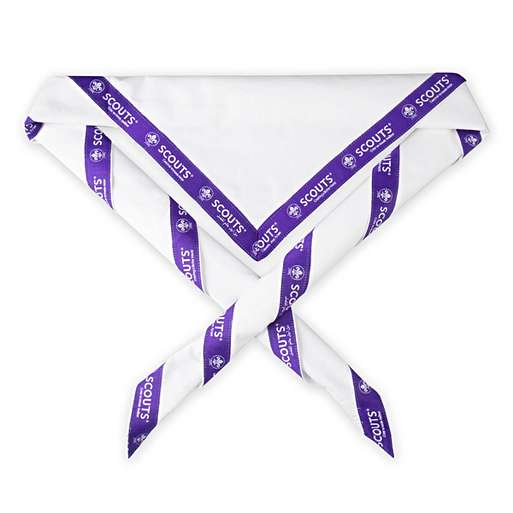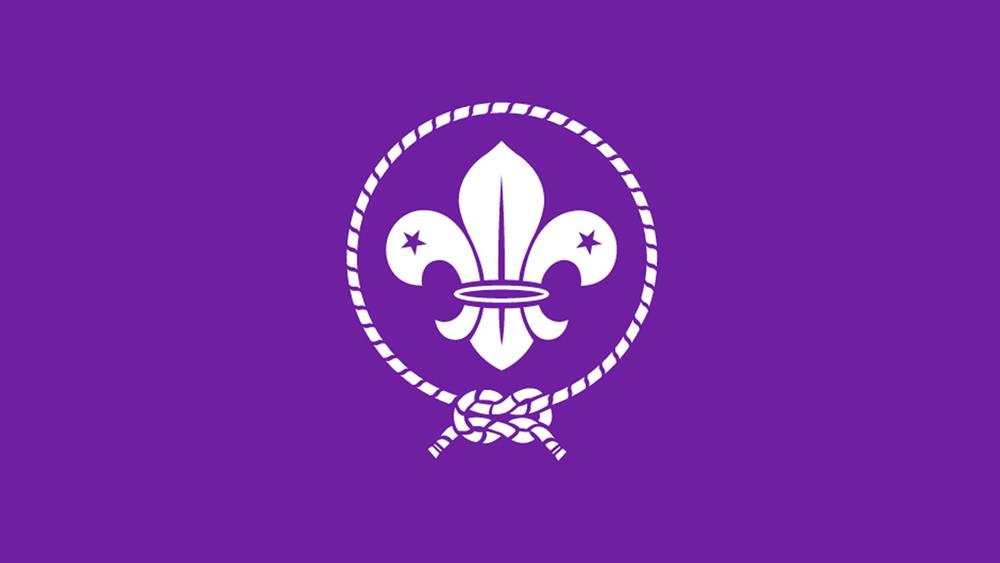*History of Scout-Scarf.*
The Scouting movement makes the scarf part of its uniform. A generally ceremonial item, the scarf is taught to be a practical wilderness item in the Scouting tradition. The scarf, unrolled, is designed to be the perfect size for use as a triangular bandage for first aid.
The origin of the Scouting scarf seems to be in BP’s participation in the 2nd. Matabele War in 1896; where he worked with Frederick Russell Burnham, an American-born scout employed by the British Army. BP copied Burnham’s practical style of dress, including “a grey-coloured handkerchief, loosely tied around the neck to prevent sunburn”. When BP launched the Scout Movement with the book Scouting for Boys in 1908, he prescribed a scarf as part of the Scout uniform, which he stated was “very like the uniform worn by my men when I commanded the South African Constabulary”. He continued; “Every Troop has its own scarf colour, since the honour of your Troop is bound up in the scarf, you must be very careful to keep it tidy and clean.” Initially, Scout scarves were tied with a variety of knots, but the use of a “woggle” / slide, originated in the United States in the early 1920s & quickly spread around the Scouting world.
Each Scout group would have a scarf of different design & colours. In most countries each Scout Troop uses its own colour scarf (BPIS follows this). The colours are usually the “Troop Colours” which may have a particular historical significance to the troop / to the local community.
At Scouting camps & jamborees these scarves represent units, subcamps / the camp as a whole. Fun scarves are also used as memorabilia at Scout events & country scarves are often traded at international gatherings
Scarves can also have important ceremonial functions in Scouting, for example, the 1st Gilwell Scout Group present a special scarf on completion of the Wood Badge.
A neckerchief, neckie, necko, necker, kerchief or scarf is a type of neckwear associated with Scouts, cowboys and sailors. It consists of a triangular piece of cloth or a rectangular piece folded into a triangle. The long edge is rolled towards the point, leaving a portion unrolled. The neckerchief is then fastened around the neck with the ends either tied or clasped with a slide or woggle.
The Scouting movement makes the neckerchief part of its uniform. A generally ceremonial item, the neckerchief is taught to be a practical wilderness item in the Scouting tradition. The neckerchief, unrolled, is designed to be the perfect size for use as a triangular bandage for first aid.
The origin of the Scouting neckerchief seems to be in Robert Baden-Powell’s participation in the Second Matabele War in 1896; where he worked with Frederick Russell Burnham, an American-born scout employed by the British Army. Baden-Powell copied Burnham’s practical style of dress, including “a grey-coloured handkerchief, loosely tied around the neck to prevent sunburn”.When Baden-Powell launched the Scout Movement with the book Scouting for Boys in 1908, he prescribed a neckerchief or scarf as part of the Scout uniform, which he stated was “very like the uniform worn by my men when I commanded the South African Constabulary”. He continued; “Every Troop has its own scarf colour, since the honour of your Troop is bound up in the scarf, you must be very careful to keep it tidy and clean.”Initially, Scout neckerchiefs were tied with a variety of knots, but the use of a “woggle” or slide, originated in the United States in the early 1920s and quickly spread around the Scouting world.
In most countries each Scout Troop uses its own colour neckerchief. The colours are usually the “Troop Colours” which may have a particular historical significance to the troop or to the local community.
In Canada, while most groups use colour neckerchiefs, there is also an optional alternate universal pattern tartan neckerchief: white plaid on red for Scouts, gold plaid on dark green for Cubs. Alternating thick and thin lines of the plaid spell out “CANADA” in Morse code.
In Australia, Queensland uses a single maroon necker for the whole state, while the other states allow groups, Venturer Units and Rover Crews to choose their own necker. Region and Branch Teams also have their own neckers.
In Hungary, as well as the Hungarian diaspora communities in countries such as the U.S.A., the necktie color is national rather than distinctive for each troop, being light blue for ages 10 and younger and grass green for ages 11 and up.
In other countries individual patrols are identifiable by their neckerchiefs and so troops may have many different neckerchiefs all at once. In both of these cases the neckerchief and its colours are an issue of identity, and become emblematic of a troop or a patrol.
Neckerchiefs can also have important ceremonial functions in Scouting, for example, the 1st Gilwell Scout Group present a special neckerchief on completion of the Wood Badge




